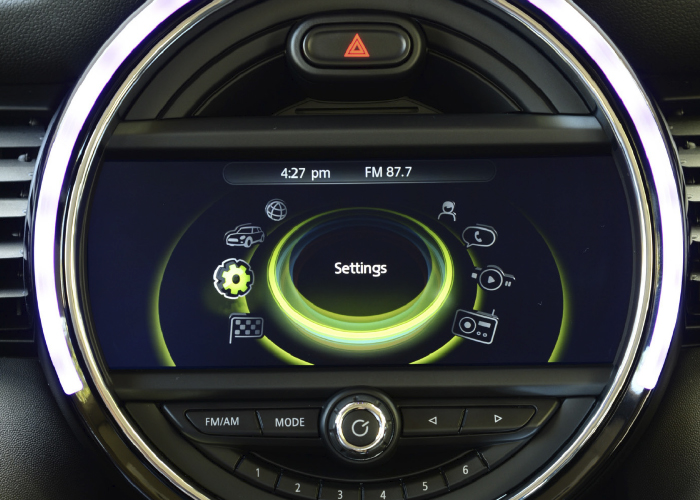In 2004, MINI was one of the early adopters of tire pressure monitoring systems. This was driven by the lack of space for a spare tire and the use of run-flat tires. Many owners opted to go with conventional tires when the original run-flat tires wore out. This makes the health of the TPMS system even more critical to the safety of the driver because they can spot a low tire before it is destroyed from being under-inflated.
RPA: Indirect System
2004-’07 MINIs used wheel speed sensors to calculate the inflation pressure of the tires. The system needs the vehicle to be going 10 mph or faster to determine the pressure.
Early MINIs used a TPMS or Run-Flat Module called an RPA that looks at other information like ambient temperature and vehicle dynamics to calculate the pressure. The module also communicates with the central information display (CID) in the instrument cluster.
RDC: Direct Systems
MINI’s Tire Pressure Monitor (RDC) is a system for monitoring the tire inflation pressure with sensors inside the wheel assembly. It was standard on most models starting in 2008 to meet the TPMS mandates.
The reset procedure requires driving the vehicle with the pressure set to the specification set on the door placard. If the system detects a pressure below 24 psi, or if the pressure difference between the wheels on one axle is greater than 5.8 psi, the system will set a plausibility code and reject the reset procedure.

MINI TPMS systems have four sensors and four antennas. When a reset procedure is performed, the system is checking the signals from the sensors to verify the operation and location of the sensors. The system is then looking at the plausibility of the pressures and resetting the target value. The system is also looking at temperature values to determine the target tire pressure under various temperatures.
MINI TPMS Light Diagnostics
If the warning lamps come on in yellow and red, it is a signal there is low tire inflation on one or more of the wheels. An alert from the speakers will sound if there is a flat tire or substantial loss of tire pressure.
If the small warning lamp flashes in yellow and then lights up continuously followed by the larger warning lamp turning on, it is a signal there is a system malfunction. In some cases, no tire pressures will be displayed even if the tires are properly inflated. This can happen when a wheel without a sensor is mounted or radio frequencies are interfering with the signals.
2004-’07 With the Reset Button
When a tire pressure warning light is observed, or a new set of tires is installed, check and inflate tires to specified pressures. After correcting the air pressure with the engine off and the ignition on, press the “Set” button and hold 4 to 6 seconds until the words “Set tire pressure” appears in the instrument cluster or the yellow LED lights up the base instrument cluster for a few seconds. Driving the vehicle will complete the initialization process. Sorry, there is not an indication indicating the process is complete.
2008 and up
After 2008, most models follow the same reset procedure as the indirect systems. The process is started with inflating the tires to the correct pressure, starting the engine and navigating setting menus in the cluster or iDrive screen just like any BMW. The last step is always going for a drive to confirm the reset.














